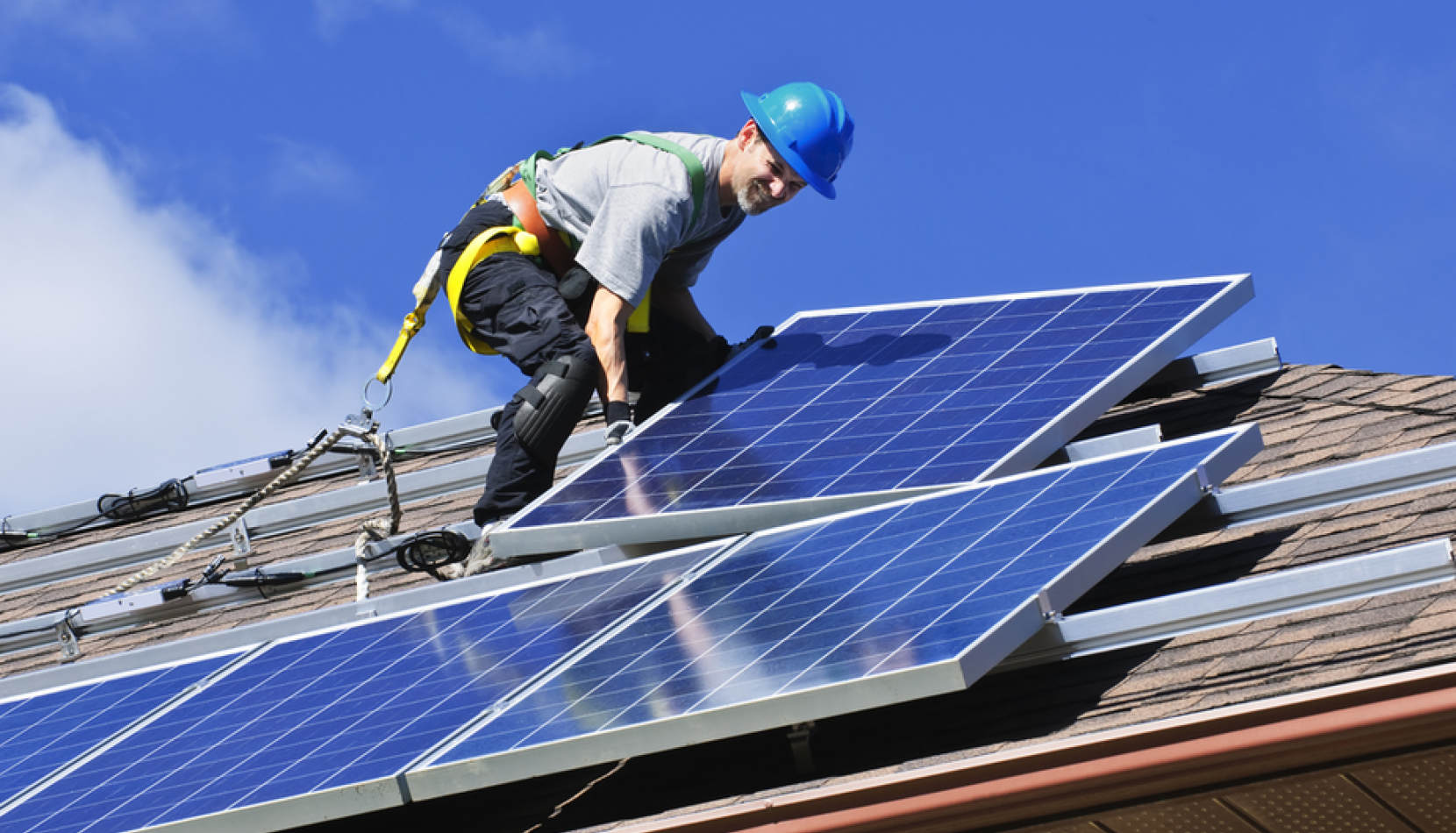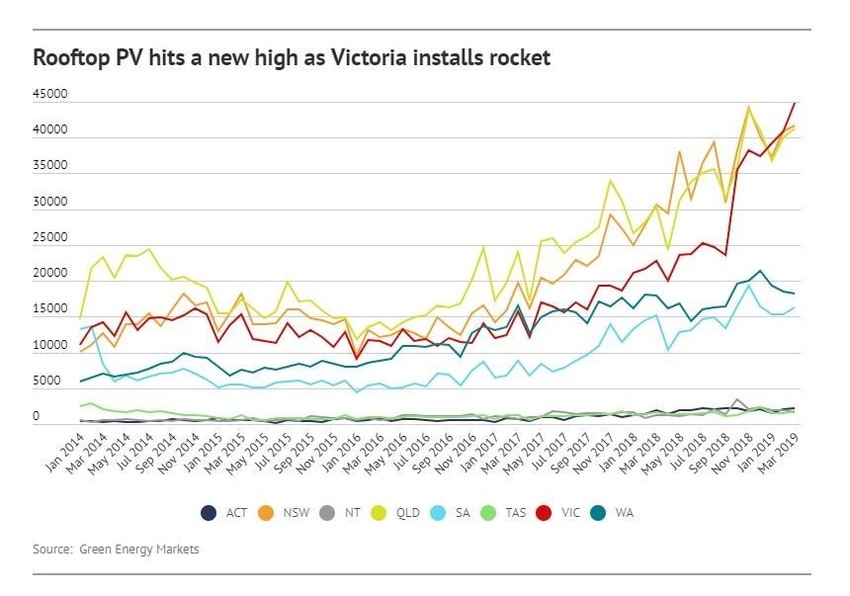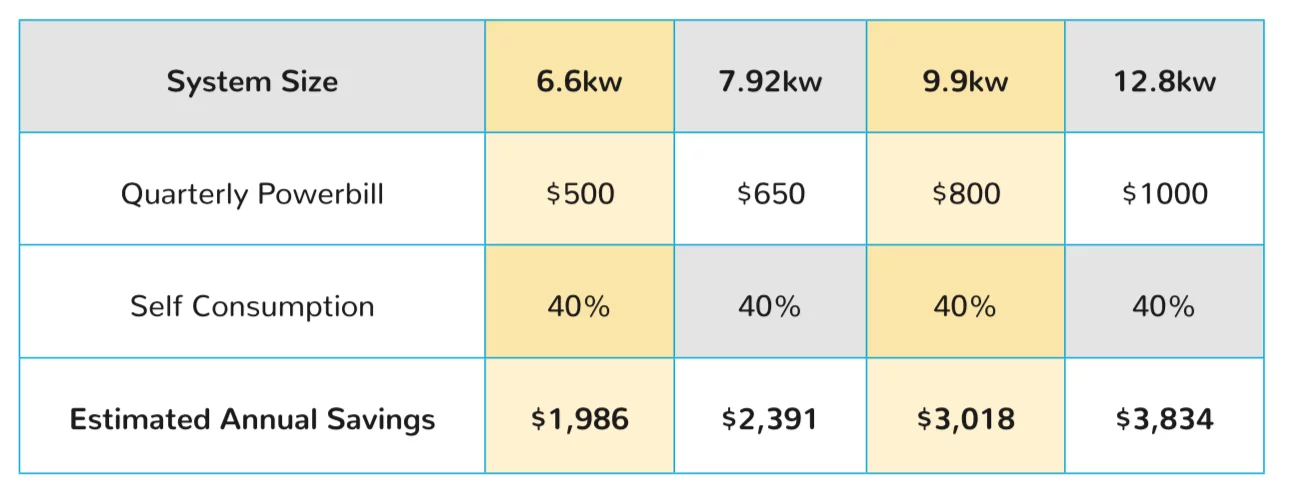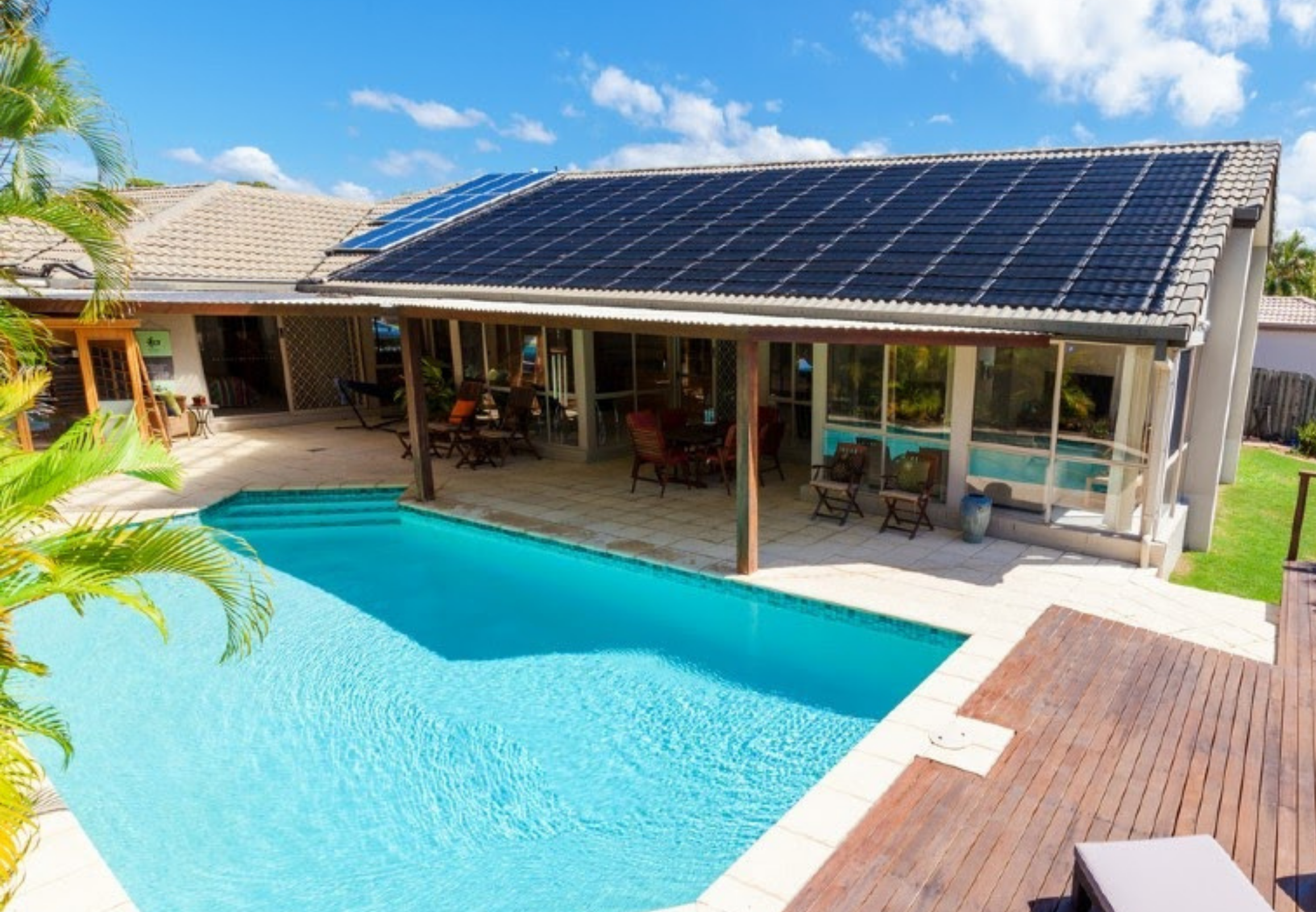- How Big Should Your Solar Battery and System Be?
- How solar battery storage works
- Introduction to solar battery storage
- Tesla Powerwall battery solutions
- What Do Solar Batteries Look Like – and Where Can I Install Them?
- What Size Solar System Should You Have When Adding a Battery
- What’s the Real ROI on Solar and Battery Systems in 2025?
- When are batteries worth it? Solar energy battery viability.
- Which Solar Battery Is Right for Your Home?
- Does Solar Increase Property Value in Shoalhaven? The Numbers Speak for Themselves
- Empowering Small Businesses with Solar: The Australian Small Business Energy Incentive
- How much will you save with solar?
- How the 2025 Australian Cheaper Home Batteries Program Works
- Solar finance options
- The 2024 NSW Government Home Solar Battery Rebate Scheme
- What government incentives and financing options are available for solar?

Break free from residential energy markets: why install solar?
More and more homeowners are choosing to install residential solar power systems and panels instead of relying on residential energy markets.
In Australia, the renewable energy revolution has been growing steadily in recent years.
More than two million (21%) of Australian households now have rooftop solar panels installed. These solar panels have a combined capacity that exceeds 10 GW.
In 2018, solar accounted for 5.2% (or 11.7 TWh) of the total electrical energy production in Australia (227.8 TWh).
In fact, Australia was ranked 43rd out of 115 countries surveyed on their energy performance and readiness to embrace sustainable energy by The World Economic Forum’s 2019 Energy Transition Index.

Here is a brief comparison of solar PV systems and residential energy markets in Australia.
Electricity from PV Panels | Residential Energy Markets |
Supplies 2 million households | Supplies 9.7 million customers |
Produced 12,455.3 GWh in 2019 (estimated) | Produced 49,781 MW in 2019 |
Produces 5.2% of Australia’s energy | Produces approximately 80% of Australia’s energy |
Controlled by Clean Energy Council | Controlled by COAG Energy Council |
Available all over Australia | Not available in Western Australia and the Northern Territory |
The popularity of solar panels is due to homeowners’ desire to reduce long-term energy costs. An added benefit for homeowners is that solar energy helps to minimise their carbon footprint.
If you’re a homeowner who’s considering installing a solar power system in your home, you’re in the right place. Here, we explore the benefits of installing a solar power system on a residential home.
Environmental considerations
Nine in 10 Australians are concerned about living more sustainably. But only half of Australians believe that they’re doing their fair share to protect the planet. If you want to reduce your carbon footprint, installing a solar power system in your home is a great place to start.
There are several ways that energy from solar panels is eco-friendly:
1. Reduction of greenhouse gas emissions
By using solar panels in your home, you help reduce harmful greenhouse gas emissions.
You also reduce the planet’s reliance on fossil fuels – which are responsible for emitting greenhouse gases. These gases are trapped in the Earth’s atmosphere, causing temperatures to rise. They let sunlight pass through the atmosphere but prevent the heat it brings from leaving it.
Thus, greenhouse gases are responsible for global warming.
These gases include water vapour, carbon dioxide, methane, nitrous oxide and fluorinated gases.
On top of being bad for the environment, fossil fuels are also a finite resource. This explains why oil and gas have a long history of association with global conflicts.
2. Improving public health
By using clean energy sources, you also play your part in improving public health. Traditional energy sources such as coal and natural gas produce harmful air and water pollution.
3. Reducing strain on water supply
The processing of fossil fuels requires significant water resources through processing, which pollutes the water supply.
Solar energy, on the other hand, requires little to no water to produce and energy from solar panels doesn’t pollute water supplies.
Solar energy is also reliable in times of droughts or heat waves.
Electricity generation from coal, natural gas or nuclear power poses an extra risk during heat waves and severe drought. It requires the use of larger amounts of water for cooling.
Cost benefits of solar energy
Energy costs often make up a significant portion of homeowners’ expenses.
The average homeowner in Victoria pays a whopping $1,490 a year for electricity from the residential energy markets!
In South Australia, the figures are even higher with households paying up to $1,759 a year in electricity bills.
State | Average Annual Electricity Bill |
Victoria | $1,490 |
Queensland | $1,367 |
New South Wales | $1,627 |
South Australia | $1,759 |
Using solar power can reduce and even eliminate costs. By installing solar panelling, you harness a free energy source that cannot be monopolised.
Although your solar system produces more clean energy on sunny days, the solar panels continue to draw energy even in gloomy weather. On cloudy days, your solar PV system might produce around 10% to 20% of the electricity it usually generates.
The savings start right from the moment your PV system is turned on. However, they’re more substantial in the long term.
If you’re currently getting your power from the residential energy markets, you are using power from what’s referred to as “the grid”. This means that you are billed quarterly.
Using solar power saves you money in two ways:
Direct reduced consumption from the grid
Feed-in-tariffs
1. Direct reduced consumption from the grid
When you install a solar PV system in your residence, you primarily use the power it generates instead of any electricity from the grid. When it gets dark, the system switches over to electricity supplied from the grid.
However, if you have a solar battery installed with your system, you save even more. Instead of switching to the grid at night, you continue using power from your battery. The more solar power you can harness and store, the less you need to pull from the residential energy markets. This translates into more money saved.
How much you save depends on factors such as:
How your current billing system is set up.
Which PV solar system you use.
Using $0.30 as the average cost of power from the grid, let’s break down how much you can save.
Solar power takes only 5-6 cents to produce, a huge reduction from the 30 cent price tag on power from the grid. This means that electricity pulled from the grid is approximately $0.25 or six times more expensive than solar.
Look at how much power you need per day. You can do this by recording the difference in your meter readings twice: first thing in the morning and at sunset. This helps you work out how much you can save with your solar system.
The table below gives you a hint at your potential savings:

2. Feed-in-tariffs
Another way that homeowners can save money with solar systems is through feed-in-tariffs. You may wonder what happens if your PV system produces more energy than you use.
If your system isn’t connected to battery storage, the left-over power is fed back into the grid. This energy will be supplied to other consumers by the national energy market. You receive a credit amount for every KW received. This reduces your electricity bill even further.
Your savings depend on:
The exact amount of power from your PV panels
Your actual power consumption
Generally, your savings from the feed-in-tariffs could be anywhere from $30 – $200 per quarter. You can work out how much you save using the table above.
3. Boosting your home's value

Are you planning to eventually resell your residential property? Installing PV systems significantly increases your resale value as today’s home buyers are instantly attracted to properties that have solar panels.
77% of Australians say that solar panels add value to a property. Additionally, 57% would invest about $10,000 more into buying a home with installed solar panels. Research shows that the more solar panels there are on the roof, the higher the value of the property.
4. Protecting the roof
A solar power system can boost the value of your property in another, less-obvious way.
The panels extend the life of your roof by protecting it from the elements. Making your property more energy-efficient, especially in the summer.
Instead of the scorching sun beating down on the roof, it is absorbed by the solar panels. This keeps the temperatures in the house lower, cutting down on cooling costs.
Tip: When listing your property for sale, highlight the fact that it has PV systems. Make sure that the solar panelling is displayed prominently in the property images.
5. Earn government renewable power incentives
When you install PV systems on your property, you’re eligible for some rebates and incentives from the government. The incentives benefit households and businesses that install small scale renewable energy systems. The small scale renewable source can be solar, wind or hydro, or an eligible hot water system.
Being eligible to receive incentives makes solar power even more cost-effective.
Installing an eligible system means receiving a Small-scale Technology Certificate (STCs). The value of the STC can be redeemed when you sell or assign them.
The number of STCs you can earn depends on:
The amount of renewable energy produced by the system.
The amount of electricity consumption the system reduces.
The climate region where the system is installed.
Redeeming STCs
Homeowners can receive benefit from their STCs in these two ways:
Assigning the STCs to an agent (usually the system installer). In exchange, the homeowner can get a discount or delayed cash payment.
Selling the certificates themselves. You can sell STCs through the open STCs market for prices dictated by market forces. You can also sell them through the STCs Clearing House with the price fixed at $40 per STC (excluding GST).
The best solar power system for your home
Investing in solar power systems in your residential property is advantageous no matter what. However, to get the best out of your solar system, quality is a key factor.
There is different-quality equipment available in the market. You should always avoid those at the lower end of the price and quality spectrum. Ideally, your solar panels and solar battery storage should be able to last for at least 25 years.
Consider these elements before buying solar panels or battery storage system:
Durability of materials
Size of the panels
Wattage capacity
The efficiency of the inverter
The reputation of the provider
Shoalhaven Solar excels in all the above elements and is passionate about providing quality solar solutions. We strive to innovate – always looking for new ways to link our communities to a more sustainable future. Every system from Shoalhaven Solar is individually designed to meet the customer’s needs. With Shoalhaven Solar systems, you get a return on your investment within 2 – 4 years.
All Shoalhaven Solar products come with a minimum 10-year warranty. We also give our customers a workmanship warranty for the lifetime of your system. To start enjoying the benefits of residential solar energy, install a solar PV system ASAP.